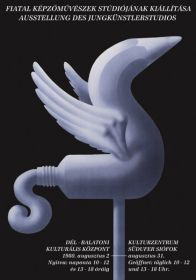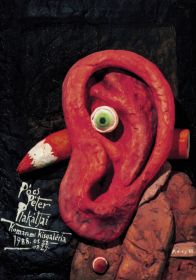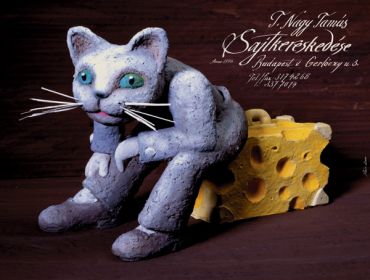In November 2001, we had the pleasure of welcoming Peter Pocs, an extraordinary poster designer to Mexico City.
He expressed to a group of Mexican designers his enthusiasm about the poster as a medium of communication, expression
and artistic experimentation. With an admirably subtle irony and eyes and hands trained in Hungary, Pocs
demonstrated once and for all that the ideas and concepts embraced by poster designers should come from the
everyday lives and respective cultures, which each of them has inherited and learnt.
His close observation of the environment and high sensitivity to finding original forms of artistic expression make
Pocs constantly try new styles, at the same time that he finds in the integration of his statuettes the strength of texture a
the unique colours of malleable materials.
Peter explained that one day his two little daughters took home some Plasticine, which they used for shaping
figures, as part of their playful education at kindergarten: "The sight of my girls enjoying that malleable material in their
hands made me really curious, and I could not help joining in their play. It was so pleasant to feel the wetness and consistency
of that strange vegetal material that I decided to integrate it into my posters.17 Since then, Peter has been perfecting
his technique of moulding and preparing his own materials, creating real sculptures, which assume an ephemeral, yet
transcendent role, when caught in a masterly manner by his photographer friends. Under the direction of the artist-designer
from Budapest, the photographers evidenced great dexterity in the use of light, whereby they managed to cooperate
with him in this new form of expression.
Peter's curiosity, his insistence on the freshness peculiar to children as well as the spontaneous approach to and
exploration of new ways, are qualities which enabled him to become one of the major charismatic poster designers in
Europe. Inspired obviously by Poland, his calligraphic concept forms part of the texture of his works. The way he manipulates
his three-dimensional metaphors and the appearance of his materials, achieved both manually and through the light and
shade in the photographic images, makes his oeuvre unique and absolutely original in the history of poster design.
Confident that the concepts and ideas represented by his posters will be sufficiently clear to the audience, Pocs
has increasingly taken advantage of the new possibilities of digital montage and retouching, thereby developing an
individual poster style. His work offers a perfect blend of different elements, whereby the viewer enjoys sedate colours and
textures, which result in tactile sensation without having to touch anything. In short, with his calligraphic solutions, which
make up a coherent unit, Pocs evidences the craftsmanship hidden in his hands. Everything in its place, the information
well ordered and only what is necessary; attractive to the eye and speaking its own language.
What more can we expect from Pocs's posters?


 1980, Exhibition of young artists studios
1980, Exhibition of young artists studios
 1988, Peter Pocs poster exhibition in Komarom
1988, Peter Pocs poster exhibition in Komarom
 1996, DOPP in GGG (exhibition of the group Ducki, Orosz, Pinczehelyi and Pocs at the GGG Gallery in Tokyo)
1996, DOPP in GGG (exhibition of the group Ducki, Orosz, Pinczehelyi and Pocs at the GGG Gallery in Tokyo)
 2000, Tamas T. Nagy - Cheese Trade Company
2000, Tamas T. Nagy - Cheese Trade Company
 1986, Fatima Concert
1986, Fatima Concert
 2000, Tamas T. Nagy - Cheese Trade Company
2000, Tamas T. Nagy - Cheese Trade Company